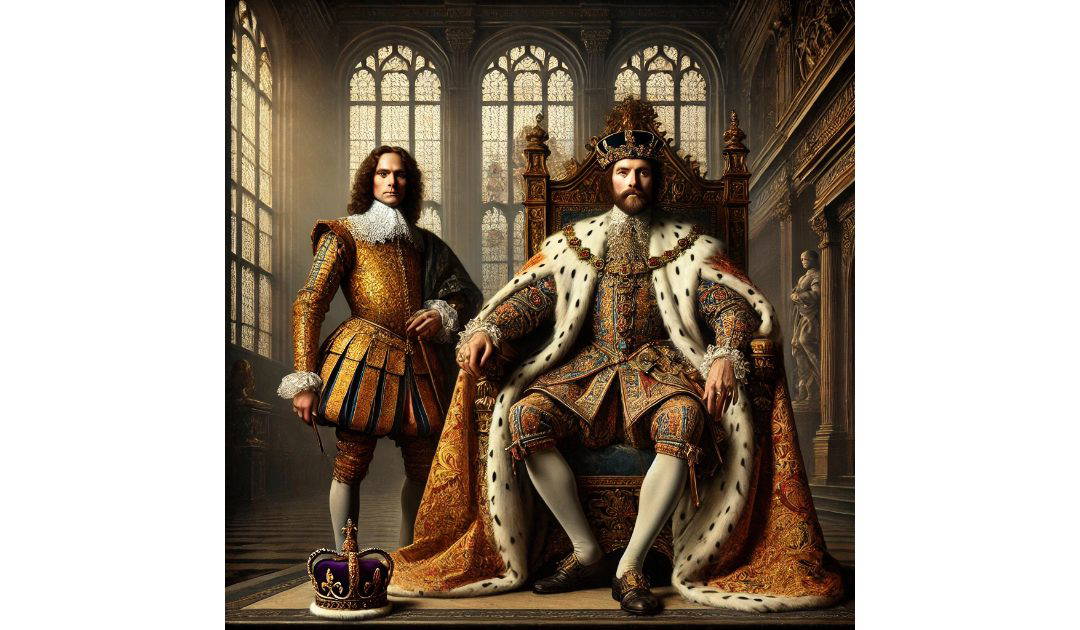On 6th December 1617 George Villiers was made Earl of Buckingham by King James I, replacing Robert Carr, 1st Duke of Buckingham (1592-1628). He was a prominent figure in the early 17th century English court, known for his close relationship with King James I, and his significant influence on politics and culture during a transformative period in British history. Born into a relatively modest family, Villiers quickly rose to prominence, becoming one of the most powerful courtiers of his time.
Villiers was educated at St. John’s College, Cambridge, and entered the royal court as a young man. His striking appearance and charm caught the eye of King James I, who appointed him as a gentleman of the bedchamber in 1615. This position allowed Villiers to cultivate a close personal relationship with the king, which according to Encyclopedia Brittanicia was also sexual, and he quickly became a favorite, often referred to as “the king’s darling.” His rise was meteoric; within a few years, he was elevated to the peerage, becoming the Baron of Whaddon and later the Earl of Buckingham.
As a courtier, Buckingham wielded considerable influence over the king, which he used to advance his own interests and those of his allies. He played a key role in various political and military decisions, including the disastrous Cadiz expedition of 1625, which aimed to capture the Spanish port but ended in failure. Despite such setbacks, Buckingham’s influence remained strong, and he was appointed Lord High Admiral, overseeing the Royal Navy.
Buckingham’s tenure was marked by controversy, particularly regarding his foreign policy decisions. He advocated for war against Spain, which was deeply unpopular among many in Parliament and the public. His close ties to the king often put him at odds with other nobles and politicians, leading to a growing resentment towards his power. Critics accused him of corruption and favoritism, which contributed to a decline in his popularity.
In addition to his political manoeuvers, Buckingham was also a patron of the arts and architecture. He commissioned several notable buildings, including the magnificent Buckingham Palace, which would later become a royal residence. His support for artists and playwrights helped to foster the cultural landscape of the time, contributing to the flourishing of English drama and literature.
Villiers was assassinated in 1628 by John Felton, a disgruntled former soldier. Felton believed that Buckingham’s policies were detrimental to England and sought to rid the nation of his influence. The assassination shocked the court and the nation, leading to a wave of public sentiment against the duke, who had already faced considerable opposition.
There are points at which this story rubs shoulders with the Sir Anthony Standen Adventures. King James I sent Standen to the Tower of London accused of treason, yet he was later released and exiled, as recounted in the The Spy who Sank the Armada. Villiers played a significant role in the marriage of King Charles I to Henrietta Maria of France, which had important political and cultural implications for England in the early 17th century. The marriage was part of a broader strategy to strengthen alliances between England and France, particularly in the context of ongoing tensions with Spain and the Catholic powers of Europe. The marriage negotiations are taking place during the course of the fifth book in the series. The working title is The Favourite Murder because favouritism is rife at court and is the theme of the story.

